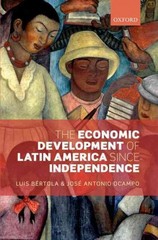Plz answer the. following 2 frqs in detail
Assume soybeans are produced by a perfectly competitive, constant-cost industry. Fresh Farm is a typical rm producing soybeans and is currently operating with an economic loss. a. Using a correctly labeled graph for Fresh Farm, show each of the following in the short run. i. The marginal cost curve and average total cost, labeled MC and ATC, respectively ii. Fresh Farm's price and loss-minimizing quantity, labeled PF and QF, respectively iii. The average variable cost curve, labeled AVC b. Suppose that newspapers have recently reported that excessive soybean consumption can cause health problems. As a result, will the new loss-minimizing quantity for Fresh Farm be greater than, less than, or equal to QF in the short run? Explain. c. Is the long-run market supply for soybeans perfectly inelastic, relatively inelastic, unit elastic, relatively elastic, or perfectly elastic? d. Assume now that the soybean market is in a long-run equilibrium and that fertilizers used in soybean production cause water pollution. Using a correctly labeled graph for the soybean market, show each of the following. 1. Market equilibrium quantity and price, labeled QM and PM 11. Marginal social cost curve, labeled MSC Ill. Socially optimal quantity, labeled QS IV. The area representing deadweight loss, shaded completely 4. 1. The graph below depicts the market conditions Zhao, Inc., faces in the zizzles market, where D = demand, MSB = marginal social benefit, MR = marginal revenue, MSC = marginal social cost, and MPC = marginal private cost. Price Per S Unit ($) 50 MSC MPC 20 10 D = MSB 150 200 300 400 500 600 Quantity 225 250 MR a. What two potential sources of market failure exist in the market for Zhao's zizzles? Explain each potential source of market failure using the information in the graph. b. Using numerical values from the graph, identify Zhao's profit-maximizing quantity and price. c. Assume a $15 per-unit tax is imposed on the zizzles market. Using numerical values from the graph, identify Zhao's profit-maximizing quantity and price. d. Zhao opposes the $15 per-unit tax analyzed above in part (c) and instead proposes a policy of no government intervention. If economic advisers are only interested in maximizing social welfare, would they support the policy of no government intervention? Explain








